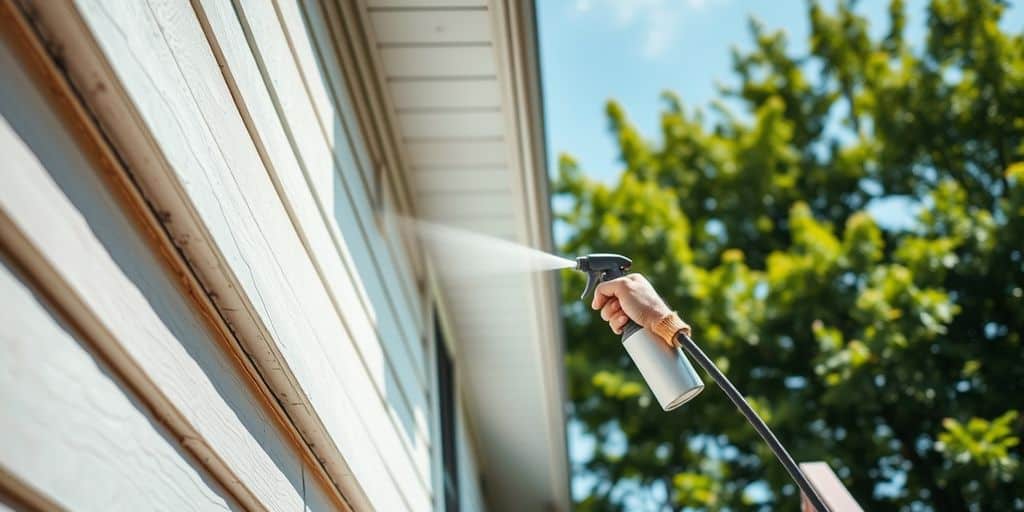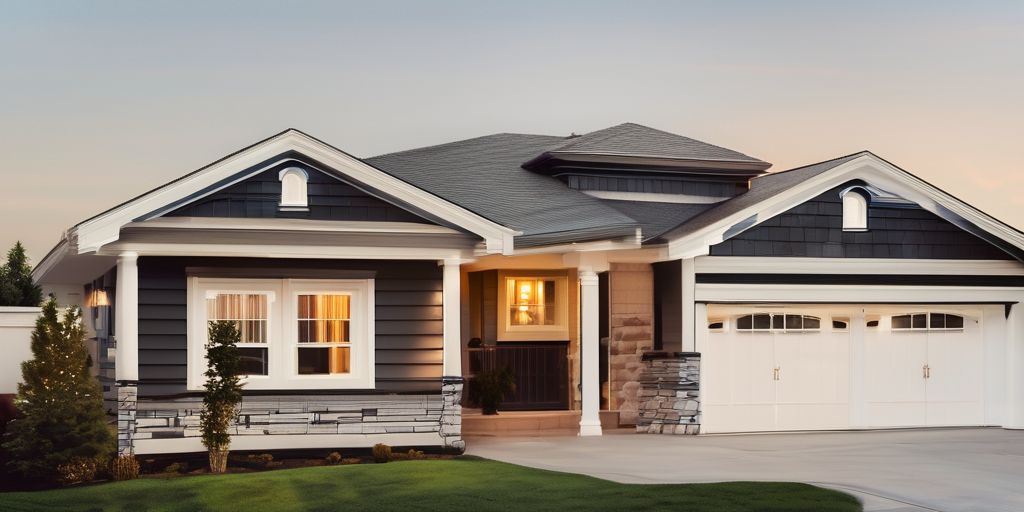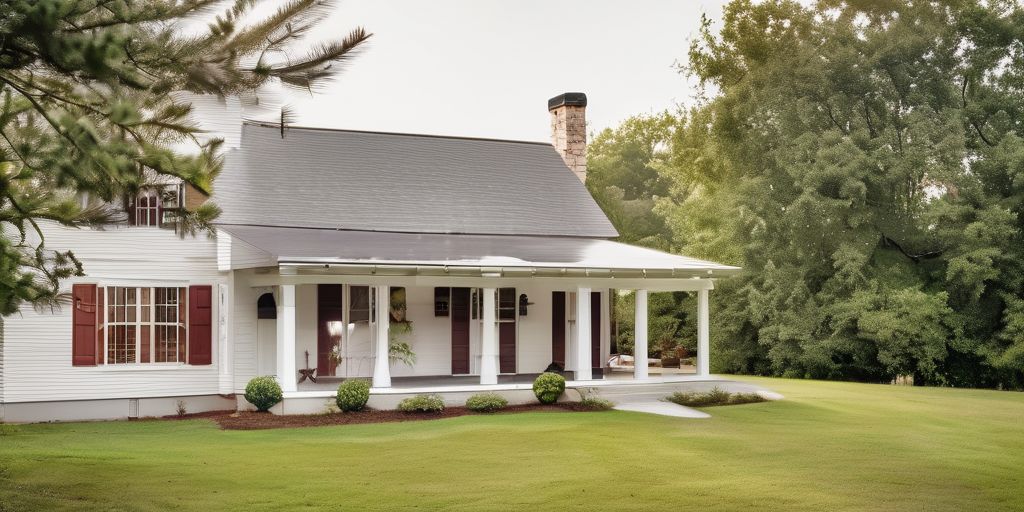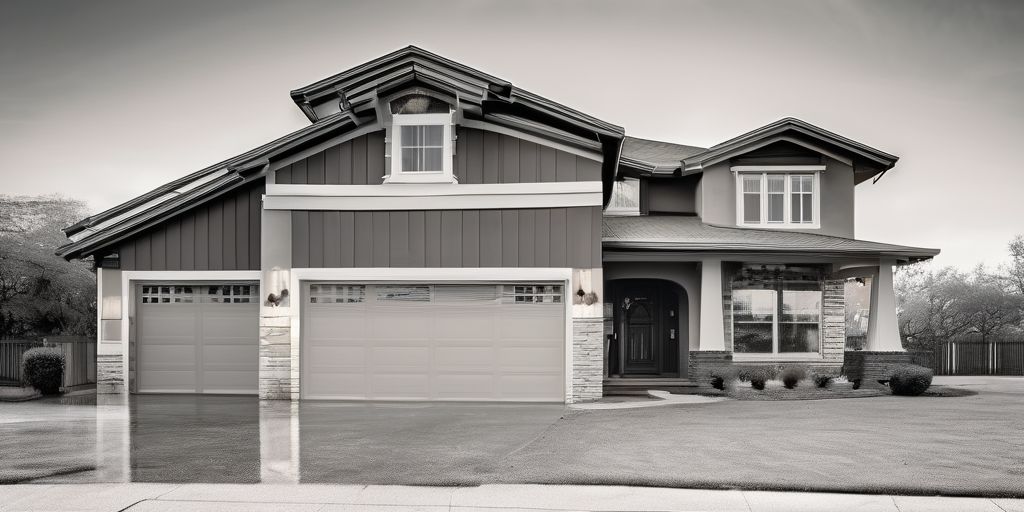Spray painting outdoors in Kitchener-Waterloo can be a great way to refresh your home’s appearance, but it comes with its own set of challenges. From dealing with wind and humidity to ensuring proper safety measures, there are many factors to consider. This guide will help you navigate these challenges and achieve a professional-looking finish.
Key Takeaways
- Always prioritize safety by wearing protective gear and ensuring good ventilation.
- Choose the right weather conditions, avoiding windy or overly humid days.
- Test your spray paint on a small area before starting the main project.
- Apply thin, even coats and allow proper drying time between each layer.
- Consider seeking professional help for large or complex projects.
Safety Precautions and Ventilation
When spray painting outdoors in Kitchener-Waterloo, it’s crucial to follow safety precautions and ensure proper ventilation. This helps in preventing accidents and achieving a smooth finish.
Selecting the Right Environment for Spray Painting
Choosing the right environment for spray painting is crucial for achieving a smooth and durable finish. The environment affects the paint’s drying time, consistency, and overall quality. Here are some key factors to consider:
Ideal Temperature and Humidity Conditions
- Moderate temperature and low humidity are ideal. Extreme temperatures can cause the paint to dry too quickly or too slowly, while high humidity can lead to a tacky finish.
- Aim for temperatures between 55-75°F and humidity levels below 65%.
Managing Wind and Dust
- A calm day is preferable. Wind can blow dust and debris onto wet paint, marring the surface.
- If you’re in the Kitchener-Waterloo area, consider local landmarks like Victoria Park, which might influence wind patterns.
Indoor vs. Outdoor Considerations
- Indoor environments allow for more control over conditions, but ensure there is adequate ventilation.
- Outdoors is ideal for ventilation, but be mindful of weather conditions, bugs, and debris. If working indoors, a garage or well-ventilated room is suitable.
When setting up your workspace, prioritize a clean, controlled environment to minimize imperfections in the paint job.
Remember to cover surrounding areas to protect them from overspray. If you’re in the Kitchener-Waterloo area, consider the local climate and whether you’ll be painting near any landmarks that could influence environmental factors, such as Victoria Park’s open spaces potentially leading to more wind.
Testing the Spray Paint
Reading and Following Label Directions
Before you start, always read the directions on the label. This will give you important information about how to use the spray paint correctly. Make sure to follow these steps:
- Shake the can vigorously for about 45 to 60 seconds.
- Hold the can 15-18 inches away from the surface.
- Spray in a swift, even motion to avoid drips.
Conducting a Test Spray
It’s crucial to test your spray paint on a separate piece of material before applying it to your project. This helps you see how the paint behaves and ensures it provides a thin, fine mist. Follow these steps:
- Choose a similar material to your project surface.
- Spray a small area to check for color and finish.
- Observe how the paint adheres and dries.
Testing the spray paint helps you avoid surprises and ensures a smooth application.
Evaluating Paint Adherence and Color
After conducting a test spray, evaluate the paint’s adherence and color. This step is vital for achieving a professional-quality finish. Consider the following:
- Check for any color inconsistencies or changes.
- Ensure the paint adheres well without peeling or bubbling.
- Make any necessary adjustments before proceeding with the full application.
By taking the time to test your spray paint, you’re setting the stage for a successful project. Whether you’re working on a small item or a larger surface, this step is essential for achieving the best results.
Applying Thin, Even Coats
Achieving a professional finish when spray painting requires applying thin, even coats. This technique ensures a smooth surface and minimizes the risk of drips and uneven texture. Here are some key steps to follow:
Starting with a Primer
- Begin with a primer to create a uniform surface. This helps the paint adhere better and provides an even color base.
- Choose a primer suitable for the material you’re painting.
Using Consistent Application Techniques
- Apply the paint in a consistent manner, using ‘W’ or ‘M’ shapes to cover the surface comprehensively while maintaining a wet edge.
- Avoid thick coats: apply thin coats of paint to allow for proper drying and adhesion.
- Change the direction with each new layer to ensure even coverage across the entire surface.
Allowing Proper Drying Time Between Coats
- Allow each coat to dry completely before applying the next. This typically takes about 30 minutes to an hour, depending on the paint and environmental conditions.
- When reapplying layers, patience is key. Rushing the process can lead to imperfections and a less durable finish.
When working on your project, consider the impact of the weather. High humidity or extreme temperatures can affect drying times and paint behavior.
By adhering to these practices, you’ll ensure that each layer contributes to a flawless finish, harmonizing with the surroundings and enhancing the overall aesthetic of your Kitchener-Waterloo home.
Protecting from UV-Rays and Humidity
When spray painting outdoors in Kitchener-Waterloo, it’s crucial to protect your work from UV rays and humidity. These elements can significantly affect the longevity and appearance of your paint job.
When to Seek Professional Help
Handling Complex or Large Projects
Sometimes, a spray painting project can be too big or complicated to handle on your own. If you have a large area to cover or intricate details to work around, it might be best to call in the experts. Professionals have the experience and tools to manage these challenges efficiently.
Lack of Proper Equipment
Not everyone has access to the specialized equipment needed for a high-quality spray painting job. Professional painters come equipped with the right tools, ensuring a smooth and even finish. This can be especially important for outdoor projects where factors like wind and dust can affect the outcome.
Ensuring Long-Lasting Results
A professional painter can help you achieve a durable and attractive finish. They know how to combine spray and brush techniques to maximize the efficiency and quality of your exterior paint job. This ensures that your paint job will last longer and look better.
For complex projects, hire professionals for quality finishes and proper equipment. Regular maintenance and protective coatings are essential for longevity.
If you’re near the Kitchener area, consider visiting Victoria Park to see some beautifully maintained outdoor spaces. It might give you some inspiration for your own project!
If you ever feel overwhelmed or unsure about your home’s exterior painting needs, it’s time to reach out to the experts. Our team at We Paint Siding is here to help you every step of the way. Don’t wait until it’s too late; visit our website today to learn more about our services and get a free estimate.
Conclusion
In conclusion, preventing overspray in outdoor spray painting projects in Kitchener-Waterloo is all about preparation and attention to detail. By following the steps outlined in this guide, such as ensuring proper ventilation, testing your spray paint, and choosing the right environmental conditions, you can achieve a professional finish. Remember to always prioritize safety by wearing protective gear and working in a well-ventilated area. With patience and practice, you can master the art of spray painting and keep your projects looking fresh and vibrant. Happy painting!
Frequently Asked Questions
How do I prevent overspray while spray painting outdoors?
To prevent overspray, use a spray booth or create a makeshift barrier with plastic sheeting or cardboard. Always spray on calm days to avoid wind carrying the paint.
What safety gear should I wear when spray painting?
Always wear safety goggles, a respirator mask, gloves, and protective clothing to shield yourself from paint fumes and particles.
How do I test spray paint before starting my project?
First, read the label directions carefully. Then, conduct a test spray on a scrap piece of material to check for color accuracy and paint adherence.
What are the ideal weather conditions for spray painting outdoors?
The best conditions are moderate temperatures and low humidity. Avoid painting on windy days or when rain is expected.
How many coats of spray paint should I apply?
Apply several thin, even coats, allowing each one to dry completely before applying the next. This usually means waiting about 30 minutes between coats.
When should I consider hiring a professional for spray painting?
Hire a professional for large or complex projects, if you lack the proper equipment, or if you want to ensure long-lasting, high-quality results.





